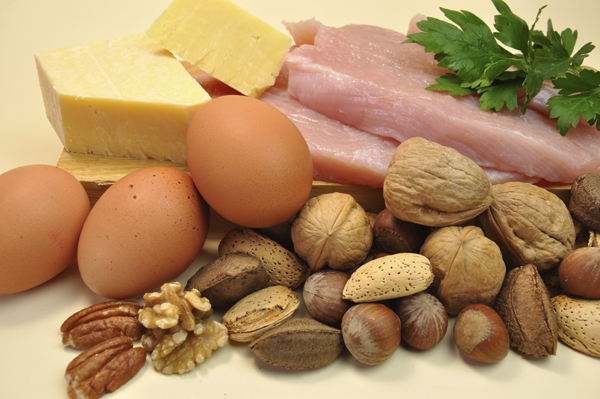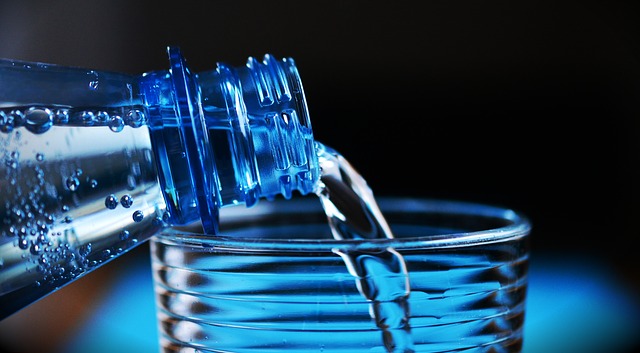The diet
Was it possible in the 1st Part about the changes in our body, which at the age of 40 plus usually take place before, so the 2nd part is mainly about nutrition and the 3rd part is about training to help us with certain negative changes in To protect this phase of life from all too rapid aging.
At this point a note right from the start:
This topic in general and the following reading material are very complex and can therefore can only be described roughly, it therefore requires a certain basic knowledge.
Anyone who thinks that they do not need to burden themselves with such dry reading material because they believe that only fate decides age, or that only the intensity of strength training decides how quickly we age, or because he believes In fact, you don’t need to read the following lines in any other way to be better informed.
No matter how hard we try, with a healthy diet, sporting activity and a supposedly exemplary one Lifestyle To slow down the aging process, we have to adapt to a certain way of life from a certain age.
- Decreased pancreatic function
- Decreased absorption capacity of the intestine with regard to proteins, fatty acids and Micronutrients.
- Decreased production of enzymes to break down proteins
- Decrease in gastric acid and thyroid hormone secretion
- Decreased production of other hormones that interfere with metabolism
- Less active muscle mass.
This and a lot more affects everyone at this age, whether man or woman, and we have to accept it.
More than that. In today’s times when there is an oversupply of food, it can happen very quickly that one suffers from deficiency symptoms despite the abundance of food. The stomach grows and the muscles shrink. For building and maintaining healthy muscle mass, it is not the amount of food that is decisive, but the quality of the food, and that at any age. The importance of a healthy lifestyle and sport is a common thread running through all theories of aging, because sport and diet influence the activity of genes. It protects against cancer and adult diabetes, ensures a faster metabolism, builds muscles and burns fat.
The three most important goals over the age of 40
Avoid high blood pressure, diabetes and fat metabolism disorders
From the first part we know that through an adapted diet in connection with physical activity it is in our own hands how our physical and mental performance will develop at the age of 40 plus.
Let’s go through the most important things together, first diet and then exercise.

Yes, I know you’ve already got it heard and read so often. The carbohydrates, the protein, the fat, the macronutrients, but still, please don’t forget that these are mostly recommendations for younger people and not recommendations for people “over 40” and much older .
With a healthy diet at the age of 40 plus, reduce fat and prevent muscle loss. How does that work?
Less simple carbohydrates.
The basis are high-fiber carbohydrates such as vegetables and fruits. These foods provide us with plenty of vitamins, minerals and secondary plant substances with a relatively low energy density. The choice of carbohydrate suppliers should predominantly consist of complex carbohydrates. The more complex the carbohydrates, the longer it takes the body to process them. However, the faster the carbohydrates are available, the higher the blood sugar level and thus the higher the insulin level. If too much sugar is available, it can neither be used for energetic purposes nor for glycogen storage, but is deposited as body fat.
The Glycemic Index (GI) and serve the glycemic load (GL). The GI gives the blood sugar-increasing effect of carbohydrates on a scale from 0 to 100. As a reference value, the effect of 50 g of grape sugar was given a value of 100. A comparison is now always made with an amount of food in which 50 g of carbohydrates are also consumed.
The GL also gives an assessment of the effect on blood sugar, but not the intake of 50 g of carbohydrates from the respective food, but with the usable amount of carbohydrates per serving of a food.
Both GI and GL make it clearer not how much protein and fat are being consumed at the same time. In addition, there are strong individual variations, so the same food does not cause the same rise in blood sugar levels in different people. There are also differences before and after physical exertion, the time of day, the physical condition or the age.
Nevertheless, both GI and GL are useful when choosing the carbohydrates for a balanced diet. Above all, the GL can be of great help in determining the choice of food in everyday life.
The organism’s need for carbohydrates depends on its metabolic activity Body size and weight. The body can produce some of the carbohydrates it needs itself, but it is also dependent on an external supply. It is possible to completely avoid carbohydrates (because they are not essential), but this can damage your health. Cholesterol increases in the blood have been demonstrated, which in turn has a negative effect on our heart. But there is also a breakdown of the body’s own protein and a loss of energy.
This is not all the quantity, but especially the quality, is decisive. Whether fat is good or bad for our health depends on how much of it we have in the blood and in what form it is available in the blood. Therefore, it has long been recommended to reduce the intake of animal fats and to give preference to unhydrogenated vegetable oils and fish oils. Oils with unsaturated fatty acids such as rapeseed, walnut and olive oil contain a lot of vitamin E and thus, in addition to the better flow properties of the blood, above all ensure that it is used more quickly as an energy source such as saturated fats of animal origin, which in turn are easier to store as the body’s own fat.
When unsaturated fatty acids are heated and hardened industrially, they usually produce unhealthy trans fatty acids, which have an unfavorable effect on our fat metabolism. They increase the LDL value and lower the HDL value, which in turn increases the risk of cardiovascular diseases and diabetes. Therefore, it is better to refrain from eating pastries, puff pastry, fried foods, potato chips, etc.
But you should definitely not do without the healthy unsaturated fatty acids such as those in flax, walnut and rapeseed oil, but also occur in cold water fish (omega 3 fatty acids).
It is not the amount but the ratio of the individual fatty acids that is decisive. A ratio of omega 6 to omega 3 fatty acids of 5: 1 is recommended. In the kitchen, instead of sunflower, safflower and corn oil, it is better to use rapeseed, linseed and walnut oil unsaturated fatty acids and makes the LDL (bad cholesterol) less dangerous for the blood vessels. In addition, these unsaturated fatty acids, in contrast to the saturated fatty acids, make the tissue react better to insulin.
More high quality protein.
Proteins are the main component of the body after water and they are the most important substance for maintaining health, vitality, growth, the formation of various hormones, enzymes and bone development. It is the most important substance for building muscle and body mass, but it is also used as a source of energy. The burning of protein is reduced when the food contains both carbohydrates and fats at the same time. Excess protein, which is no longer used for muscle building or energy purposes, is first excreted through the kidneys. If the amount of excess protein is too high, the kidneys have reached the limits of their capacity and the protein that is no longer required is stored as fat in the body tissue.
Food proteins are first broken down into their individual components, the amino acids, during digestion before they can be used in the body’s cells.
The biological value of the protein indicates how well the human body can utilize the supplied food protein. Many foods of animal origin, such as meat, milk and fish, have a significantly higher biological value than foods of vegetable origin Origin, they also contain proportionally much less protein. Meat and sausage products not only provide a lot of protein, but unfortunately also fat and, above all, uric acid builders.
These in turn can trigger gout and joint problems. This is why these two foods should only be consumed occasionally.
Milk has a high biological value due to its protein mixture, unfortunately also a lot of fat. Low-fat quark contains a lot of protein, but only casein. The combination of different proteins increases the biological value of the meal. In addition to many branched amino acids, skimmed quark also has a high glutamine content, which is good for the elderly, as these amino acids prevent muscle breakdown.
So far so good, but what should people do now who agree on taste good food hard to do? The answer, combining foods. For example quark with berries, rice with fish, or fruit with a protein shake, etc.
And how much protein is healthy now?

In all hypothetical calculations, the fact that proteins are not only essential for building muscle mass, but also for building other endogenous structures is often not taken into account. Cell membranes, connective tissue, skin, hair, nails, enzymes, antibodies, hormones, insulin, but also blood cells such as hemoglobin are formed from proteins. The German Nutrition Society recommends that you can consume 2 g of protein per kg of body weight without endangering your health. Depending on age and objectives, the protein supply must be adapted to the respective metabolic situation. If one does not only want to prevent muscle breakdown in old age, but also to build up muscle mass, larger amounts of essential amino acids are required to achieve an anabolic metabolism. However, absorption is more difficult in old age. A protein with a high leucine content achieves a similarly strong protein synthesis in older people as in younger people. Whey protein has a high leucine content.
With well-functioning kidneys, up to 5 g of protein per kg of body weight can be ingested even in old age without causing health problems if you eat sufficient amounts of alkaline foods such as fruit, Vegetables and salads are considered in the diet. If this does not happen, over-acidification of the metabolism is favored.
What do the studies now say:
More recent long-term studies by Falvo et al And Vukoich et al as well as Bruke et al clearly show that a high protein intake in strength athletes leads to significantly more strength and muscle mass in the long term.
Ivy et al were able to show that a combination of carbohydrates with protein increases endogenous insulin secretion significantly more than protein or carbohydrates alone.
According to current knowledge, the rate of digestion and the amino acid composition of proteins have a significant influence on the net protein balance. Quickly digestible proteins, i.e. whey protein and soy protein or mixtures of soy and whey, which are consumed in several small units throughout the day, are equally effective for building muscle and more effective than slow proteins. In addition, the mix of soy and whey protein is better than the individual proteins in terms of testosterone / estradiol radio.
According to the latest findings, protein and amino acids before training are almost as beneficial for strength athletes as the supply after training .
A study by Estmark et al, that was carried out on older men who did strength training, which only started with strength training, shows that the time after training is particularly critical for older people had started. Supplementing just 10 g protein plus 7 g carbohydrates plus 3 g fat immediately after training gave the older men a 46% gain in dynamic strength and 15% isokinetic strength, while the same supplementation only 2 hours after training resulted in an increase in dynamic strength of 36%.
But not only strength athletes who train intensively with primary goals benefit from a protein-rich diet, but also inactive weight loss enthusiasts, and older people should also ensure an appropriate protein intake, because age-related disorders in the amino acid metabolism occur here. Since in this case in particular uric acid-forming substances always play a negative role in certain foods with natural protein sources, older people should sometimes also use protein powder in such cases.
It has been proven that older people, after consuming a protein-rich meal, have a less pronounced increase in protein synthesis than younger people. That is why the main meals for older people should be at least 25-30 g protein per kg body weight.
More fruit and vegetables.
Vitamins and secondary phytonutrients accelerate regeneration by intercepting free radicals. A lot of fruit and vegetables guarantee a good supply of vitamins and secondary substances Plant substances and therefore prevents oxidative damage.
A distinction is made between fat-soluble vitamins and water-soluble vitamins. Fat-soluble vitamins are only absorbed by the body in the presence of dietary fat and can be stored in body fat over a longer period of time. In turn, water-soluble vitamins can only be stored for a short time.

Oxidative stress increasingly releases inflammatory substances that are associated with various diseases. For example arthritis, myocarditis, Alzheimer’s dementia, and various cancers. A plentiful consumption of vegetables can effectively slow down this inflammatory cascade due to its high antioxidant content. In addition to vitamins, fruit is characterized by a high bioflavonoid content. These secondary plant substances give the vitamins something like a turbo effect. Secondary plant substances can even be found in some luxury foods such as red wine, dark chocolate, cocoa and green tea.
Another reason for fruit and vegetables is the fiber and minerals they contain, because our bodies lose significantly with age of water and minerals.
There is no reason to do without fruit and vegetables.
Fiber.
These are vegetable fibers that are neither built up nor absorbed by the body, but are excreted with the stool. There is soluble and insoluble fiber. While the insoluble fiber stimulates the bowel movement and relieves constipation, the soluble fiber has a major effect on metabolism. They can lower blood lipid levels and increase cholesterol consumption and excrete cholesterol.
Dietary fibers dilute the energy content of food, thus promoting our feeling of satiety and causing blood sugar to rise more slowly. These are good prerequisites, especially for old age, to become and stay slim.
The easiest way to meet the need for fiber is to consume plenty of fruit and vegetables as well as whole grain varieties of popular products such as pasta, bread and rice – that advises at least the German Nutrition Society
Overall, a diet rich in fiber can cause gastrointestinal diseases (e.g. constipation, diverticulosis, colon cancer, hemorrhoids), metabolic diseases (e.g. obesity, diabetes) and cardiovascular diseases (e.g. hardening of the arteries , Heart attack, high blood pressure).

Water
Even if water contains no nutrients, it still makes up about 60% of the body weight of an adult. We have to keep adding water to our body because we lose around 2.5 liters of fluid through breathing, sweat, urine and stool. Depending on the load, the requirement can double by far.
Chemical reactions that take place in our cells also consume water. Yes, our blood also needs water to transport nutrients and to get rid of waste materials.
Therefore, with advancing age, particular attention must be paid to a high fluid intake. Because, unfortunately, a lack of thirst goes hand in hand with advancing age.
How much water you should consume is again only a generalized view. So it is not only the physical strain that is different or the weather, but also the foods that are eaten contain different amounts of water.
Everyone has a personal water requirement, gender, age and age are decisive sporting activity.
The recommendation of the Ministry of Health is 1.2 L Water, not including food.
Anyone who is on a diet or doing sport needs more water. With an appropriate diet, the recommendations are 2 to 2.5 liters of water.
Healthy sleep
The ability to regenerate during sleep has an impact on aging and shows mutual relationships with nutrition and exercise. A healthy diet and exercise also promote healthy sleep in older people through the increased release of melatonin at night. Healthy sleep, in turn, optimizes the release of other hormones and synchronizes metabolic processes.
Too little sleep and deteriorating sleep quality in old age (mainly men aged 45 and over) are responsible for lower hormone production. According to a study by the University of Chicago, many men over 40 not only lost the ability to sleep deeply, they also produced next to no growth hormone. Growth hormone, in turn, is released during the deep sleep phases. The shorter the deep sleep phase, the less growth hormone is produced.
With regular exercise and a healthy diet that takes into account the daily rhythms, as well as avoiding carbohydrates in the late evening, the nightly sleep rhythm can be improved in old age be improved.
A lot of protein in the evening promotes the production of growth hormones. Avoiding an evening meal, as is often recommended, is controversial. The time and quality of the last meal and the time of going to bed are decisive here. Avoiding an evening meal can also lead to hunger attacks at night.
